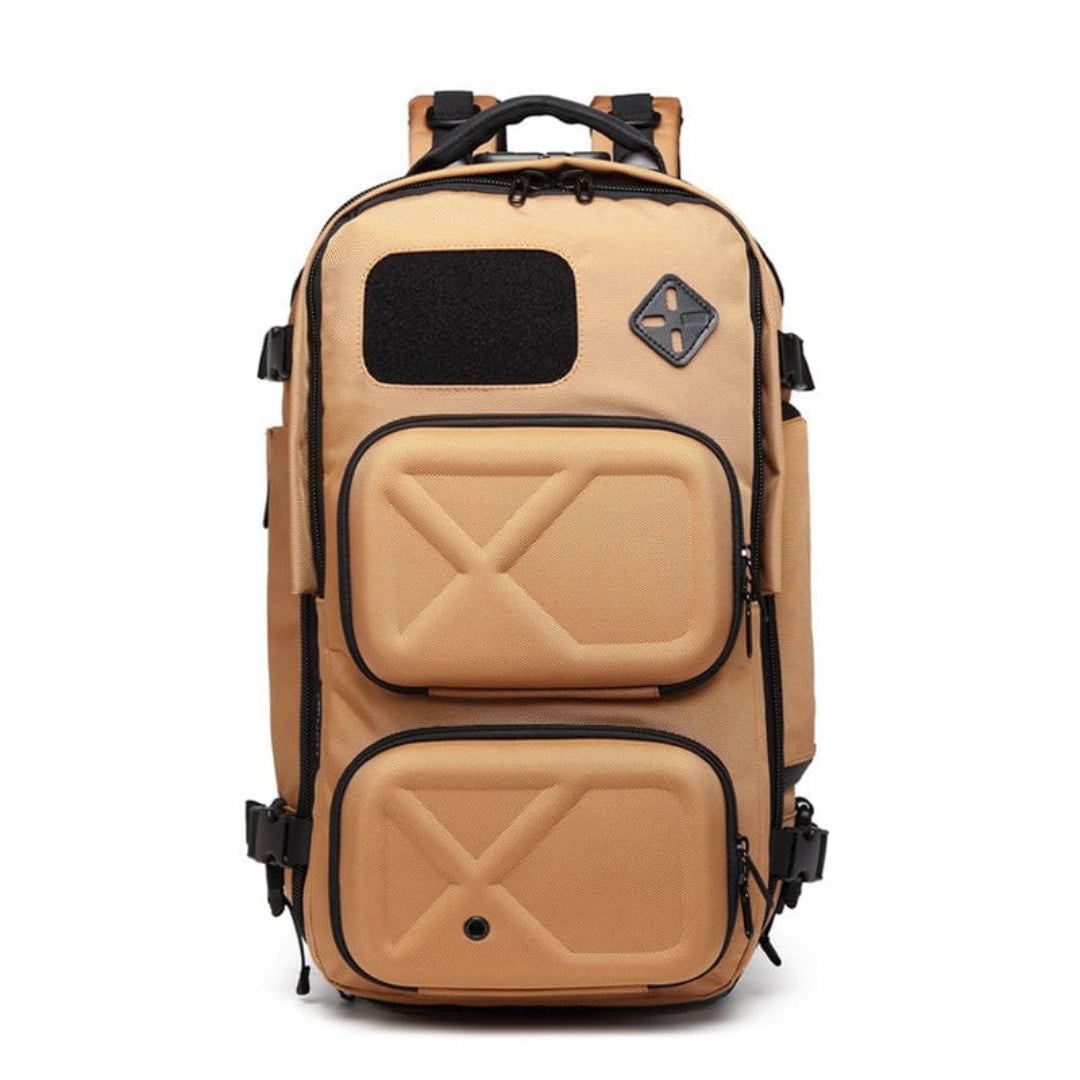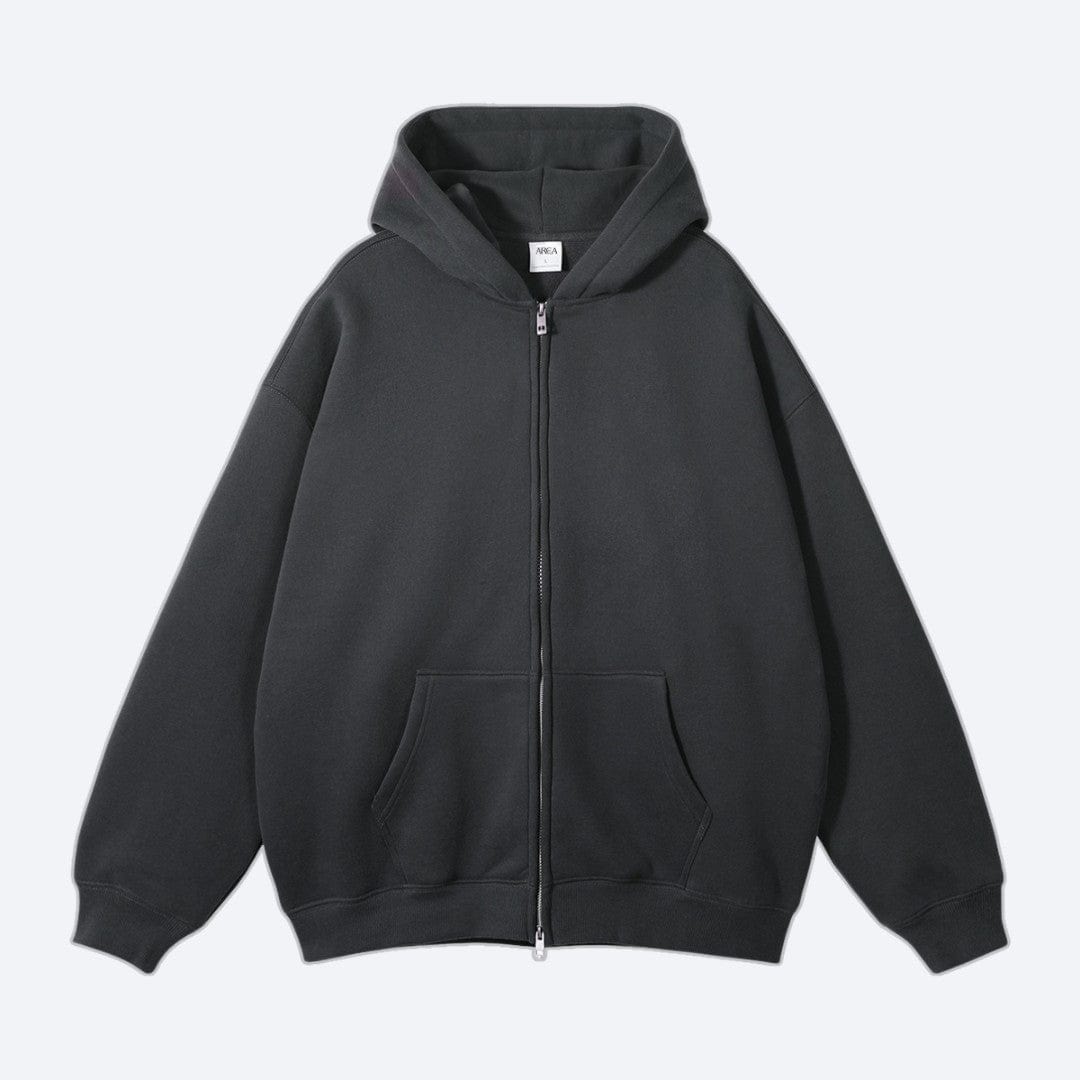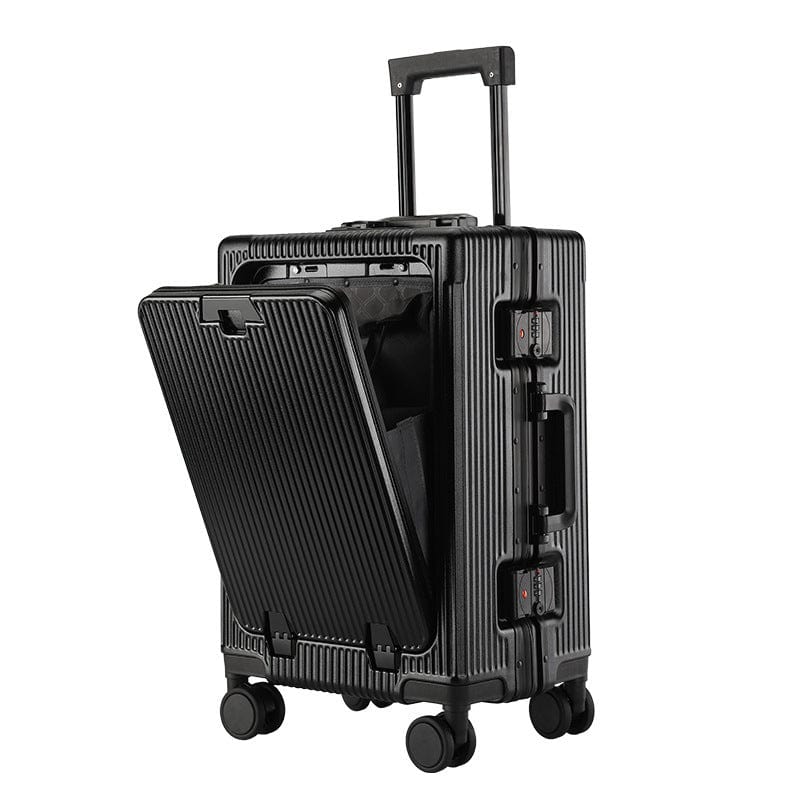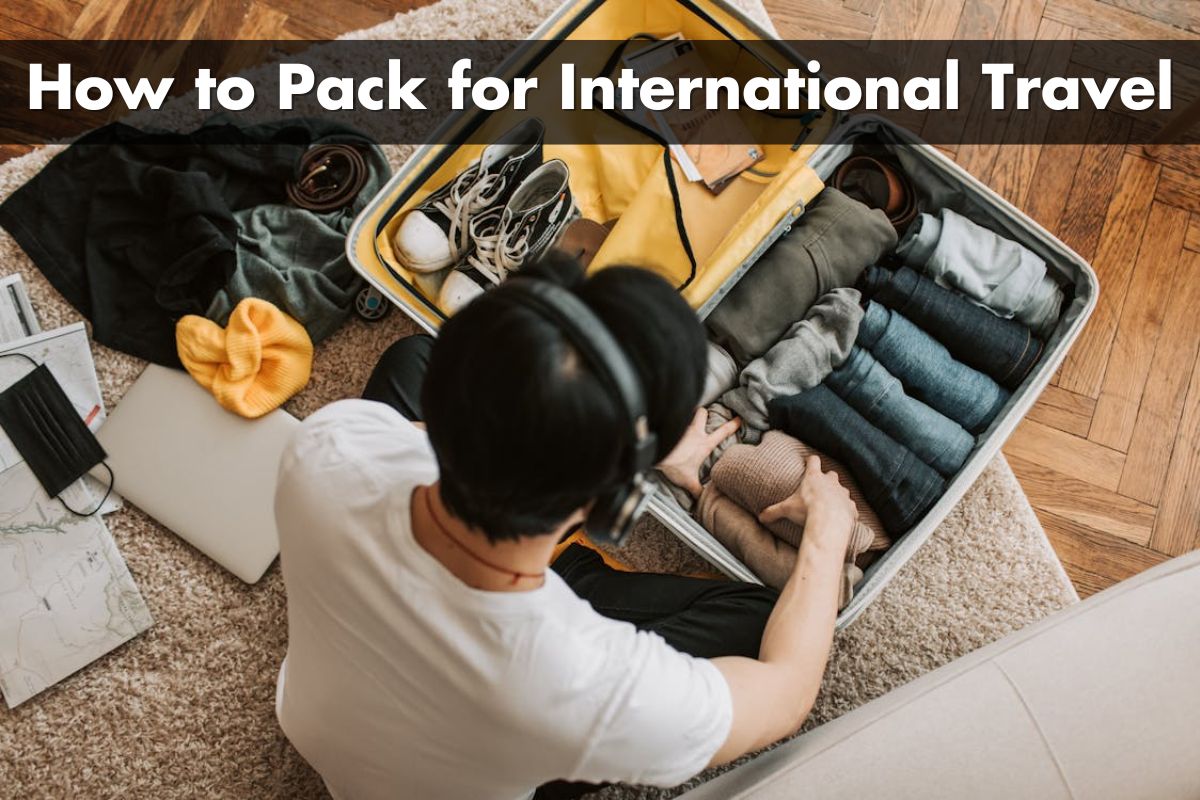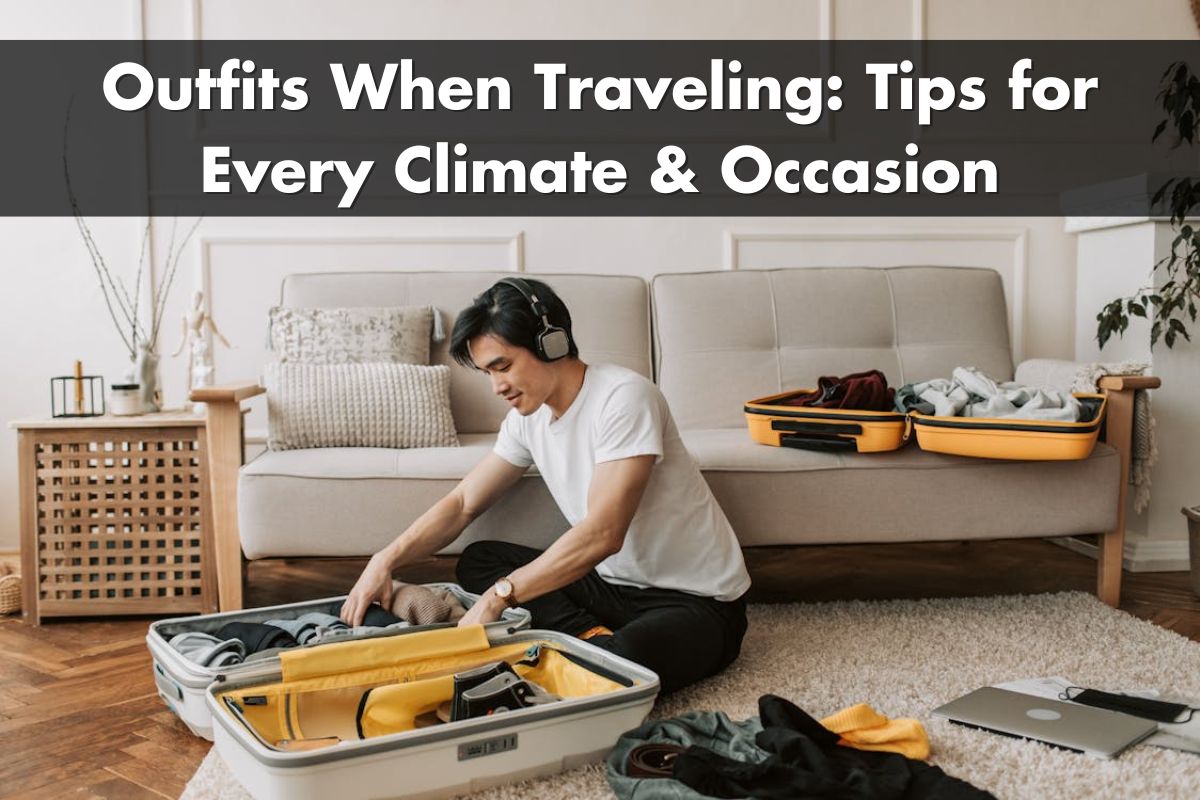Packing for international travel can feel like a daunting task, but with the right approach, it doesn’t have to be. Your packing list will depend on your destination, but some items are non-negotiable. A passport, travel visa, and vaccination card are must-haves, along with a lightweight bag or backpack to keep you mobile. Packing light is key—stick to versatile clothing and follow the 5-4-3-2-1 rule to keep things simple. With the right essentials in hand, you’ll be ready to focus on the adventure ahead instead of worrying about what you left behind.
Things To Pack For International Travel
Travel Essentials
- Travel Documents: Pack your passport, visas, vaccination card, and travel insurance certificate. Keep digital and physical copies of your itinerary, accommodation addresses, and relevant contact information. If driving, carry your driver’s license and proof of car insurance.
- Travel-Friendly Bag: Opt for a compact carry-on or backpack to ease navigation through airports and streets. Use clear bags inside to stay organized.
- Currency and Cards: Bring local currency, a credit card without foreign transaction fees, and a backup payment option. Alert your bank about travel dates.
- Electronics: Include travel accessories such as universal power adapter, portable charger, and required device cables. A compact power bank ensures charging accessibility.
Entertainment
- Books or e-Reader: Carry lightweight entertainment options for flights or downtime.
- Noise-Canceling Headphones: Minimize distractions and enhance in-flight comfort.
- Offline Content: Download travel guides, music, and movies on your phone to ensure entertainment without constant internet connectivity.
Clothing
- Travel Capsule Wardrobe: Base your wardrobe on the 5-4-3-2-1 rule travel apparel (e.g., 5 tops, 4 bottoms, 3 layers, 2 shoes, 1 hat) for versatile outfits. Ensure weather-suitable items.
- Comfortable Footwear: Carry walking shoes and slippers or sandals for varied activities.
- Weather Accessories: Add items like a rain jacket, hat, or scarf depending on destination weather.
Other Recommended Items
- Toiletries: Pack travel-sized toiletries in a TSA-compliant bag, including toothpaste, shampoo, and sunscreen.
- First Aid Supplies: Include basic medications, adhesive bandages, and necessary prescriptions.
- Reusable Items: An insulated water bottle and shopping bag save costs and reduce single-use waste.
What To Pack For International Travel
Packing efficiently involves balancing essentials with items specific to your destination. Prioritize lightweight and versatile options to simplify your luggage and enhance convenience during travel.
Essential Travel Documents
Keep your passport, travel visa (if required), vaccination card, and a copy of your travel insurance certificate easily accessible. Include a printed itinerary with addresses for accommodations. If traveling with children, carry a consent form and their birth certificates. Drivers planning to rent cars should pack their license and proof of insurance.
Clothing and Footwear
Stick to the 5-4-3-2-1 rule: five tops, four bottoms, three pairs of shoes, two dresses or sets of outerwear, and one versatile hat or accessory. Choose layers for fluctuating climates and pack weather-appropriate pieces. Comfortable footwear is essential for walking.
Electronics and Accessories
Carry a universal travel adapter, power bank, and chargers for your devices. Pack noise-canceling headphones or earplugs for long flights and crowded areas. Keep electronic entertainment like e-readers or downloaded media for downtime.
Toiletries and First Aid
Take travel-sized toiletries to save space. Include basic first aid items like band-aids, pain relievers, and motion sickness tablets. Keep a reusable water bottle and travel-size hand sanitizer.
Currency and Payment Options
Carry local currency for emergencies and small transactions. Ensure your credit cards work internationally and notify your bank about your travel plans to avoid transaction issues.
Reusable and Eco-Friendly Items
Minimize waste by packing reusable straws, shopping bags, and travel cutlery. These items are lightweight and help you adapt to sustainable practices abroad.
COVID-19 Safety Items
Include face masks, travel-size hand sanitizer, sanitizing wipes, and any required COVID-related documentation. These items ensure smooth interactions and compliance with health guidelines.
Clothing
Choose versatile clothing pieces to maximize outfit combinations. Opt for neutral colors like black, white, and gray to create multiple looks. Prioritize lightweight fabrics for easy layering and packing efficiency.
Follow the 5-4-3-2-1 packing rule for streamlined preparation. Pack five tops, four bottoms, three pairs of shoes, two dresses or outerwear items, and one set of activewear. Adjust this rule based on trip duration and activities.
Consider the cultural norms of your destination. Bring modest clothing, such as long sleeves and pants, if visiting regions with conservative dress codes. Include weather-specific items like raincoats for wet climates or thermal layers for cold temperatures.
Pack comfortable footwear suited for varied activities. Include supportive walking shoes for sightseeing, sandals for casual outings, and formal shoes for special occasions.
Use packing cubes to organize clothing. Separate items by category, activity, or day to save time during your travels. Roll clothes to minimize creases and save space in your luggage.
Keep one or two compact laundry solutions. Bring a travel-sized detergent and a sink stopper for hand washing or a quick-dry travel towel to manage small spills or stains.
Mix and Match Outfits
Choose versatile clothing pieces to create multiple outfits from a limited wardrobe. Include neutral-colored tops and bottoms, like black pants, beige skirts, or white shirts, that pair well with one another. Layering options, such as cardigans or lightweight jackets, add flexibility for varied climates.
Pack multi-functional items that transition between casual and formal settings. For example, a button-up shirt can work for sightseeing during the day and a dinner outing at night. Similarly, a scarf can serve as an accessory or provide warmth on cooler evenings.
Limit footwear to 2-3 pairs that complement most outfits. Comfortable walking shoes, stylish flats, and lightweight sandals are practical choices. Choose neutral tones to ensure they coordinate across different looks.
Incorporate accessories like belts or jewelry to alter outfit appearances without adding extra bulk to your luggage. These small additions can make a basic outfit feel polished and refreshed.
Toiletries
Packing toiletries for international travel requires thoughtful planning to cover personal needs while adhering to TSA regulations. Use travel-sized containers and prioritize items that aren't easily replaceable during your trip.
Makeup and skincare
Include multipurpose makeup and skincare items to save space. Pack essential cosmetics, such as foundation, mascara, and lipstick, and select travel-sized products when possible. For skincare, prioritize your daily essentials like cleanser, moisturizer, and sunscreen. Travel-friendly options include solid cleansers or reusable cleansing pads. Store liquids in containers that comply with the TSA 3-1-1 rule to avoid security issues.
Earplugs
Earplugs are vital for blocking out noise during long flights or stays in bustling areas. Opt for high-quality foam or silicone earplugs that can adapt to your ear size. Pack a few pairs to keep spares handy if one gets misplaced. Many reusable earplugs also come with carrying cases, keeping them clean and organized during travel.
Travel Documents
Carrying the correct travel documents is crucial for an international trip. Having both printed and digital copies ensures you're prepared in case of loss or emergencies.
Passport
Ensure your passport meets the six-month validity rule, as some countries deny entry if it expires within six months of travel. If traveling with children, verify their passports' validity, as those issued under age 16 are valid for only 5 years. Keep a printed copy and a digital backup stored securely on your phone or email.
Vaccination Card
Bring your immunization records, including proof of yellow fever vaccination if required by your destination. Certain countries may demand additional health-related documentation, so check the destination's guidelines in advance. Always carry both physical and digital copies.
License
Include your driver’s license or international driving permit (if required) for destinations where driving is planned. It's also accepted as a secondary ID in several situations. Check specific requirements in advance to avoid inconvenience.
Travel Insurance
Document your travel insurance details, including coverage for trip interruptions, medical emergencies, and activity-based risks. Keep a printed summary of your policy and a digital version accessible. Declare any preexisting conditions when purchasing, as undeclared conditions may render your coverage invalid.
Credit Cards
Carry credit cards accepted internationally and inform your bank about your travel dates and locations to avoid transaction issues. Keep emergency contact information for your credit card provider, and consider carrying a backup card stored separately.
Electronics & Accessories
Packing essential electronics and accessories guarantees a smooth international travel experience. By including versatile items that address different charging needs and storage options, you avoid unnecessary inconvenience abroad.
Converter
Bring a universal travel adapter to handle different plug types in foreign destinations. Many countries use varying voltage systems, so choosing a converter that supports both plugs and voltage adjustments prevents damage to your electronics. Compact, multi-port models save space and charge multiple devices at once.
Charger
Pack a portable power bank to keep your devices charged when outlets are unavailable. Opt for one with at least a 10,000mAh capacity to ensure multiple charges for your smartphone or tablet. Include USB cables compatible with your devices, and consider a fast charger for efficient charging during layovers or short stays.
Luggage
Secure your electronics with protective cases, and place them in accessible compartments of your carry-on luggage. Choose luggage with built-in charging ports to simplify charging on the go. For fragile devices, use padded sleeves or reinforced sections within your bag for added protection against impacts.

Crossbody Bag
Carry your electronics securely in a crossbody bag with anti-theft features like RFID-blocking pockets and lockable zippers. Select a bag large enough for your phone, power bank, and small gadgets while remaining lightweight for comfort. Look for designs that allow quick access to frequently used items, such as your headphones or e-reader.
Consider the weather
Pack clothing suited to the climate of your destination. Research seasonal weather conditions to determine if you'll need lightweight fabrics, such as cotton for warmer regions, or insulating layers, such as wool for colder areas. Choose versatile pieces that allow layering for unpredictable weather changes.
Include weather-specific accessories. Bring a compact travel umbrella, wind-resistant jacket, or packable raincoat for regions with frequent downpours. For sunny climates, pack sunglasses with UV protection, a wide-brim hat, and sunscreen with SPF 30 or higher.
Prepare for extreme temperatures or conditions. Insulated gloves, thermal socks, and a scarf are essential for cold climates, while breathable hats and neck coolers improve comfort in hot environments. Consult meteorological updates shortly before departure to ensure appropriate packing.
Prepare for rain
Pack a lightweight, compact umbrella to handle unexpected downpours. Travel umbrellas with wind-resistant features ensure durability during storms. Select one that fits easily in your day bag for portability.
Include a packable raincoat or poncho as an alternative to an umbrella. Opt for waterproof and breathable materials to stay comfortable in humid conditions. Brands offering foldable options are ideal for saving space in your luggage.
Choose waterproof footwear to protect against wet or slippery surfaces. Shoes like waterproof sneakers or ankle boots offer both coverage and versatility. For additional protection, pack quick-dry socks to keep your feet comfortable.
Store belongings in waterproof bags or use rain covers for backpacks to safeguard electronics and documents. Silicone dry bags or rain covers provide reliable moisture protection without adding bulk to your luggage.
Consider water-resistant clothing materials for a more weather-resilient wardrobe. Synthetic fabrics such as polyester or nylon dry faster than cotton, making them suitable for travel in rainy regions.
Consider getting around
Research transportation options at your destination to save time and reduce stress. Identify local public transit systems like buses, trains, or subways, and check if apps or prepaid transit cards are available for easy navigation. For example, cities like London offer contactless payment options for their underground system.
Download maps and navigation apps to access route guidance without relying on constant internet connectivity. Many apps, like Google Maps, allow you to save maps offline for use in areas with limited service. Include both digital and physical maps if you're visiting less connected or rural locations.
Verify regulations if you're planning to drive abroad. Check if an international driving permit is required and ensure your driver's license is valid in the destination country. Research local traffic laws, speed limits, and road conditions to avoid complications. Renting a car might be practical in regions with limited public transit, especially for remote destinations.
Prepare for cashless payment systems or alternative fare methods. Some countries use app-based ride-hailing services, like Uber or Bolt, while others rely on local taxis. Confirm accepted payment methods, as some locations prioritize cash while others prefer cards or mobile payments.
Keep a reusable water bottle and snacks, especially when using public transportation. Long journeys or limited refreshments at transit hubs can make these essentials particularly helpful. A crossbody bag can securely hold your items for quick access while moving through stations or crowded streets.
Stick to a color palette
Choosing a cohesive color palette streamlines packing and maximizes outfit versatility. Focus on neutral base colors like black, white, gray, beige, or navy for pants, skirts, and jackets. These shades pair effortlessly with each other or with accent colors.
Incorporate 1-2 accent colors to add variety without overpacking. For instance, include bright scarves, statement tops, or accessories in coordinating hues. This approach ensures your wardrobe remains minimal yet functional.
Limit patterns to a few key pieces. Solid-color clothing simplifies mixing and matching, while selected patterns like stripes or florals create visual interest. Choose patterns that complement your chosen accent colors.
Opt for multipurpose items in your selected palette. Pack reversible jackets, convertible dresses, or tops that transition from day to evening. These pieces expand your wardrobe options without adding bulk.
Sticking to a color palette reduces duplicate packing and increases wardrobe efficiency while traveling.
Don’t forget the power of accessories
Accessories elevate convenience, functionality, and style during your international travel. Prioritize compact, versatile items that serve multiple purposes to maximize packing efficiency.
- Scarves: Use scarves for warmth, covering shoulders at religious sites, or as lightweight blankets during flights. Choose neutral or patterned designs for versatility.
- Belts: Select belts that work for both casual and formal outfits. Opt for reversible designs to reduce packing space.
- Jewelry: Limit yourself to a few minimalist pieces, like stud earrings or pendant necklaces, to complement different looks without adding bulk.
- Hats: Include weather-appropriate hats, such as a wide-brim option for sunny destinations or a knit beanie for cold climates.
- Compression packing cubes: These optimize luggage space and keep items organized, making airport security checks easier.
- Travel organizers: Use cable organizers for electronics, toiletry bags for bathroom essentials, and flat pouches for small accessories.
Accessories tailored to your needs streamline travel while enhancing practicality.
Leave some space in your luggage
Reserve room in your suitcase for items acquired during your trip. Souvenirs, extra garments, and local products like food items or textiles often take up unexpected space. By planning ahead, you avoid overpacking and ensure there's sufficient room for these items.
Pack light to maximize your suitcase's capacity. Choose versatile clothing that works for multiple occasions and roll clothes instead of folding them to save space. Use compression cubes to keep items organized and compact, making it easier to allocate extra space.
Avoid filling your luggage to its maximum capacity before your trip. Overstuffed bags increase stress during airport inspections and limit flexibility if last-minute adjustments are needed. By leaving some unused space, you make packing and repacking more efficient.
International Travel Packing Checklist
Packing for international travel doesn’t have to be overwhelming when you approach it strategically. By focusing on essentials, staying organized, and leaving room for flexibility, you’re setting yourself up for a smoother journey. Prioritize what truly matters, adapt to your destination’s needs, and embrace the convenience of versatile packing solutions.
With the right preparation, you’ll not only save time and space but also enjoy peace of mind throughout your trip. A well-packed bag ensures you’re ready for any adventure that comes your way while keeping unnecessary stress at bay. Safe travels!


